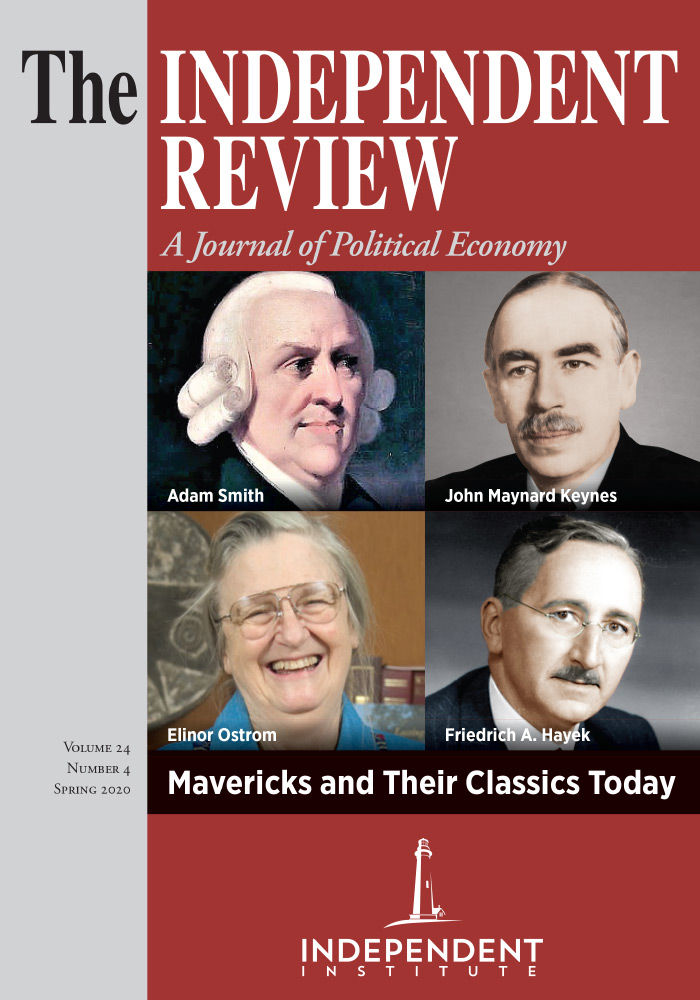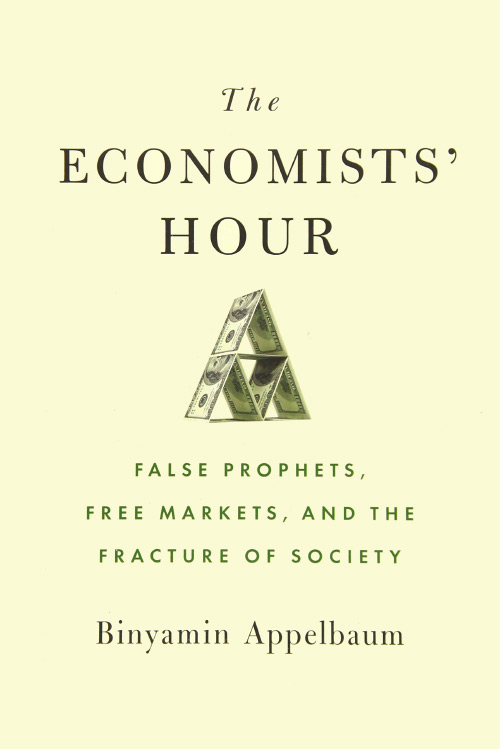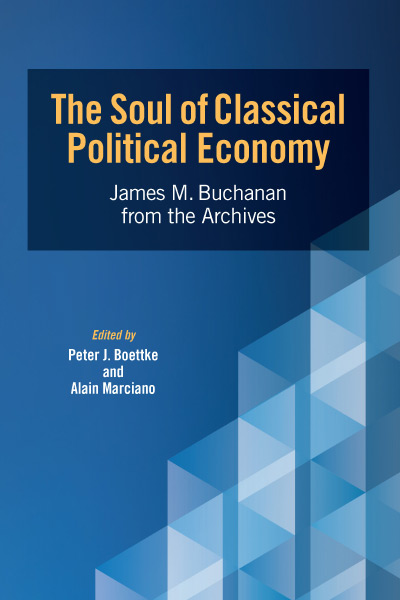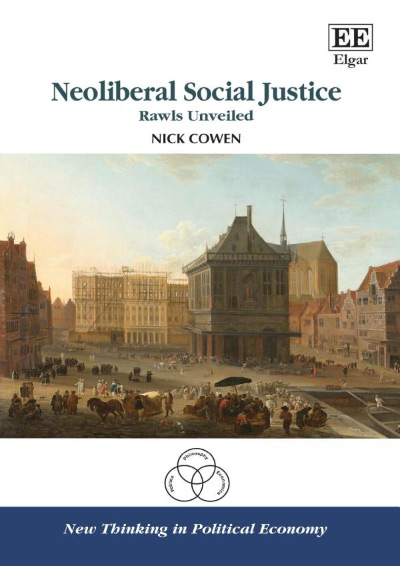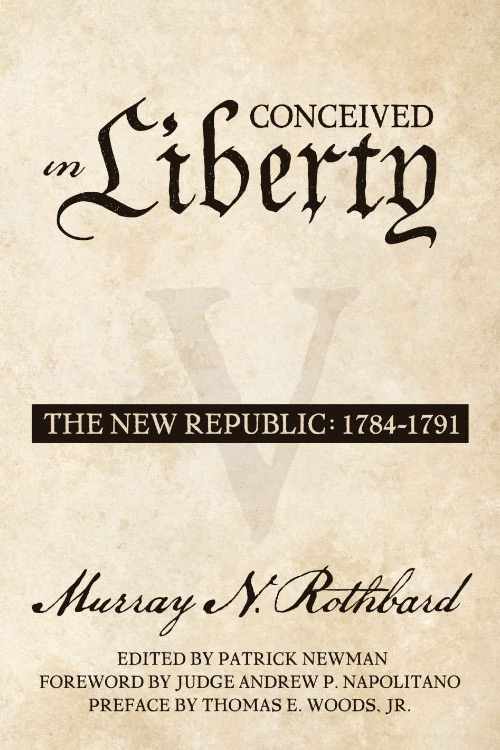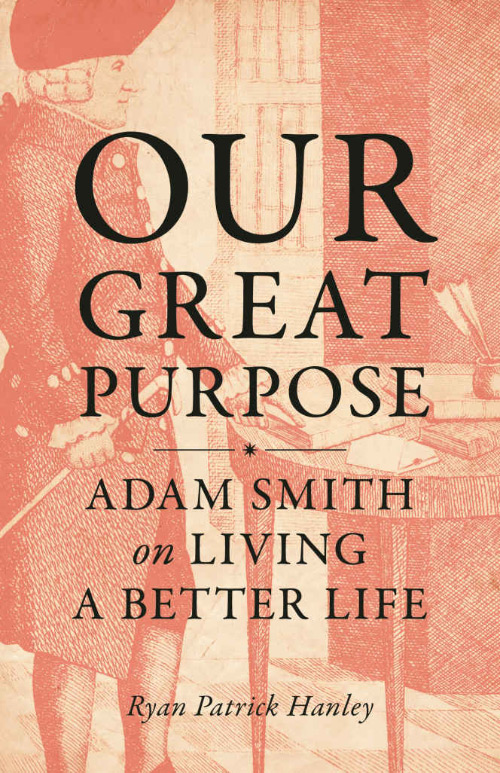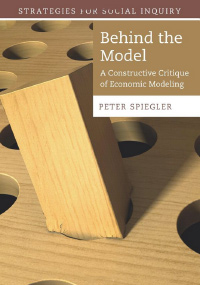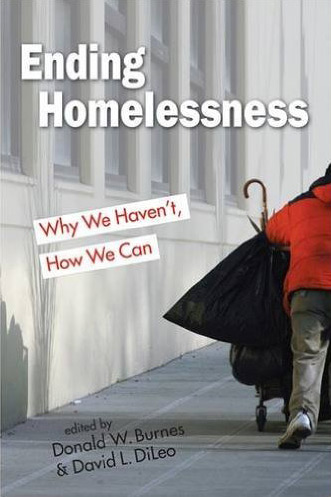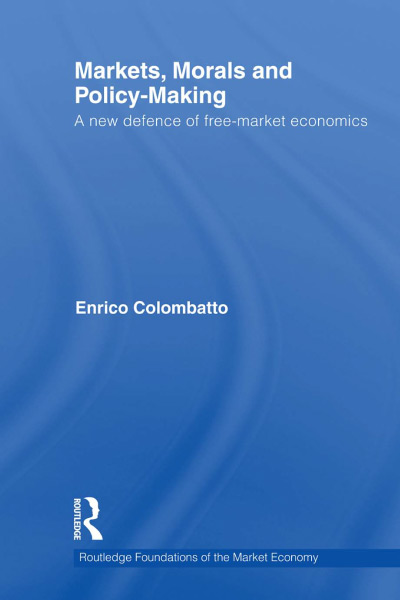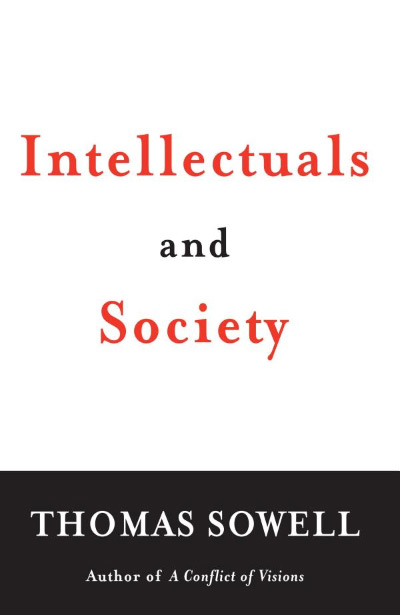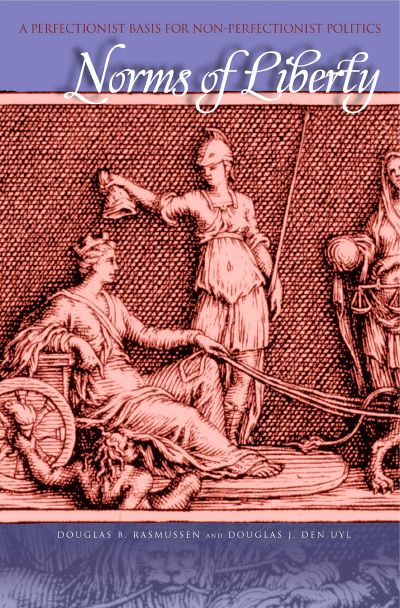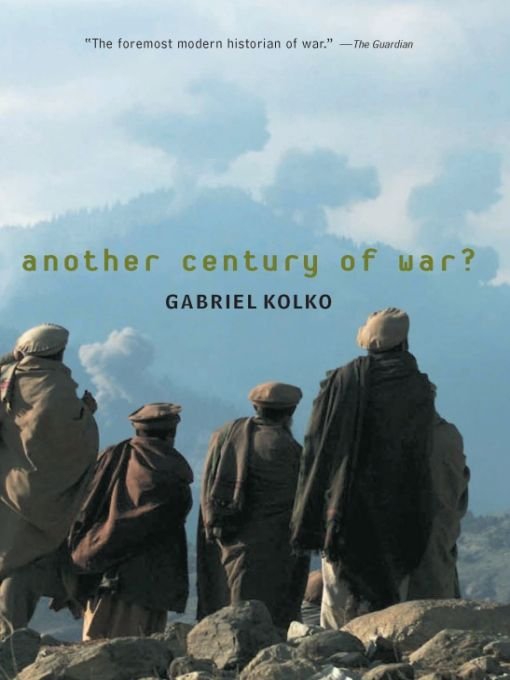John Maynard Keynes claimed that, whether for good or ill, it is the ideas of economists and political philosophers that rule the world. Binyamin Applebaum’s thesis in The Economists’ Hour is that economists and their ideas indeed have had a significant influence on government policy. But, as the subtitle suggests, the author’s assessment of that influence is not positive. The author portrays a world where the embrace of free-market ideas and the encroachment of economics into policymaking have led to grave social, political, and economic problems. While the book explores the biographical backgrounds and policy views of many prominent economists, Milton Friedman is singled out as the public intellectual whose free-market philosophy and economic ideas generated the most powerful and lasting effects. To underscore the nature and extent of Friedman’s influence, Applebaum remarks that, “Milton Friedman skittered disruptively through the twentieth century like a loose electron, leaving behind a world reconfigured by his ideas” (p. 23).
According to the author, Friedman, along with economists Walter Oi and Martin Anderson, were instrumental in promoting an all-volunteer military and ending the military draft. Fundamentally, the economic case against the draft is that the conscription of military personnel creates an inefficient use of resources and amounts to “compulsory servitude” (p. 30). The economist’s case against the draft was based partly upon its consequence for freedom of choice, but also that the draft generated a misallocation of resources. From the economist’s perspective, a taxpayer funded wage that at least covered the opportunity cost of voluntary enlistment would be more efficient than a system that conscripted military personnel, which transferred some of the cost of the draft to recruits.
As he does with other policies, Appelbaum argues that economic efficiency is the wrong criterion by which to evaluate the draft. The military draft was a significant factor in swinging public opinion against the Vietnam War, and bringing about the war’s end. Conscription, he argues, brought the cost of war home to a broad demographic and increased accountability for those who chose to wage war. Ending the draft has subsequently led to the proliferation of military interventions and endless war.
The book’s narrative goes on to deal extensively with Keynesianism vs monetarism, which is understandable given that so much of the book is about Milton Friedman and his ideas. Friedman was successful in convincing his fellow economists and policymakers that inflation was caused by central banks printing too much money, and not by other “cost-push” factors. While this shift in understanding was “Friedman’s most important legacy” (p. 66), it was not a laudable one, according to Applebaum. It came at the expense of maintaining workers’ wages and high levels of employment: “The central bankers of the world, moving en masse, had decided that inflation was worse than unemployment” (p. 88). The process of wringing inflation out of the economy in the early 1980s produced a period of painfully high unemployment, a consequence that the author believes was avoidable were it not for the ascendance of monetarism.
This reader was puzzled by the author’s interpretation of Friedman’s critique of the Phillips Curve. An idea that had been enthusiastically embraced by many economists and policymakers, the Phillips Curve showed that higher inflation could be traded off for lower unemployment. Friedman argued that, because expectations about inflation are formed adaptively (that is, based on past experience), higher nominal wages could “fool” people into increasing their labor supply and therefore increase employment. But Friedman argued that the tradeoff between higher inflation and lower unemployment was only temporary—that in the long-run there was no tradeoff, and that it would take ever-increasing rates of inflation to keep unemployment below the “natural rate.” Friedman did note in his seminal address to the American Economic Association that it would take structural changes to labor markets to permanently reduce unemployment. Applebaum makes some mention of these nuances, and apparently understands the reasoning behind Friedman’s critique of the Phillips Curve. Yet instead of conceding the point that printing money was a futile means of addressing long-term unemployment, or that accelerating inflation could have catastrophic economic consequences, the author’s contention is that Friedman was stubbornly obsessed with inflation and chose to ignore the potential for money creation to increase employment: “Friedman conceded the journey from confusion to clarity, and therefore the benefits of printing money might last for years” (p. 65).
Appelbaum notes regrettably and without any sense of irony that even the “high Keynesian” Paul Samuelson acknowledged that Friedman’s ideas on the potency of the money supply and the ineffectiveness of fiscal policy had won the debate (p. 85). The author correctly notes, however, that Friedman’s ideas about monetary policy were misunderstood (or mis-applied, in Friedman’s view), including by economists who used his ideas to promote an activist monetary policy rather than a monetary rule. Nevertheless, the book relegates the “failures of Keynesianism” to bad luck: “The Vietnam War, a pair of oil shocks, and a slump in productivity growth all contributed to the unraveling of confidence in ‘activist economics’” (p. 91).
Chapter 5 discusses the law and economics program at the University of Chicago and that program’s subsequent education of judges, lawyers, and legal theorists. By applying economic reasoning to antitrust, this program brought many of the prevailing populist assumptions about the source of monopoly power into doubt. Economists and many legal scholars such as Robert Bork contended that economic analysis and efficiency criteria applied to antitrust adds a degree of coherency to what often is an incoherent and arbitrary interpretation of the law. However, the author challenges that interpretation, arguing that prior to the advancement of the Law and Economics program, antitrust had been understood by courts and legal scholars as a means to protect society from the concentration of economic power. Contrary to what Robert Bork asserted in The Antitrust Paradox, the Sherman Act was “a conscious effort to subordinate economic efficiency to politics” (p. 133) and to protect small business. Interestingly, on this point there is some agreement between Applebaum’s populist viewpoint and a public choice interpretation of antitrust—that antitrust was an effort to protect one interest group—small business—at the expense of large businesses (see Bruce L. Benson, M. L. Greenhut and Randall C. Holcombe, “Interest Groups and the Antitrust Paradox,” Cato Journal 6, no. 3 [Winter 1987]: 801-817). Applebaum’s argument is that the consequence of inserting efficiency arguments into the interpretation and application of antitrust law has been to increase business concentration and to facilitate the pernicious influence of big business on government.
Deregulation is yet again an area where the influence of economists has left us with lingering negative consequences, particularly in the case of air travel, where flights are now over-crowded and service is poor. The regulatory economist Alfred Kahn was appointed to the Civil Aeronautics Board (CAB) by President Jimmy Carter, and under Kahn’s chairmanship the regulatory fetters over price and entry in the airline industry were loosened. However, this reader found the author’s interpretation here to be inconsistent with the book’s main populist critique. Alfred Kahn has been described by some as the “father of deregulation,” but he was not a free-market ideologue, nor did he begin his tenure at the CAB with the express intent of deregulating the airline industry, a point that, unfortunately, Applebaum relegates to an endnote. In his interpretation, Appelbaum turns a rare and distinctively bi-partisan, consensus driven policy change—one that has made air travel affordable for the average person and no longer a luxury for only the privileged few—into a policy failure. Acknowledging the fact that real fares fell by 45 percent during the 25 years following deregulation, we are nevertheless reminded that flying is “often a miserable experience, of course” (p. 179). Flights are now “too crowded.” Longing for the halcyon days of uncrowded flights, luxurious amenities, and high fares, the author notes regrettably that “[Alfred Kahn] pointedly refused to embrace the mystique of air travel” (p. 177).
The book includes chapters that are predictably critical of supply-side economics and the influence of University of Chicago economists on policy in Chile. While the book is not generally conspiratorial, as books critical of economists and economic ideas sometimes are, the author uses a lot of religious imagery in its portrayal of free-market economists. In the advancement of the cause for greater economic freedom, they are portrayed as full of religious zeal, the “true believers” who exhibit a certain naivete. In short, the author argues that bad ideas were foisted upon an unsuspecting public and polity by economists too blinded by their own ideology to foresee the consequences of their actions.
The overly zealous negative interpretations of their ideas aside (can it really be that all free-market ideas are have such awful consequences?), the author overstates the influence that economists have had on political outcomes. Reflecting on economic policy in the developing world, the economist Peter Bauer remarked that, “[economic advisors] simply endorsed what the government of the day wished to do in any case” (From Subsistence to Exchange [Princeton, N.J.: Princeton University Press, 2000, 123]). A more realistic way to describe the influence of economists and their ideas is to view them as instruments to legitimize the policies and programs political actors want to implement. In spite of the fact that economists across the political spectrum had for some time been advocating for repeal of Depression era laws that created government sponsored cartels, little interest was shown in pursuing deregulation until inflation and high unemployment become a serious economic and political problem in the 1970s. Deregulation was embraced politically to address the problem of “stagflation” and economists’ ideas gave a sense of legitimacy to various policy proposals. Roger Noll summarizes this point well:
Politicians can take advantage of salient issues by being the source of information free to voters on an important issue of the moment. An example from the early and middle 1970s was stagflation; the free information was inefficiency in regulated industries. Indeed, a fairly common complaint was that ‘excessive regulation’ was undermining business performance. Rationally ignorant voters, concerned about macroeconomic performance, could be expected to respond to this information by favoring economic deregulation, even though a fully informed analysis might conclude that regulation had only a trivial effect on national economic performance. (The Economic Theory of Regulation After a Decade of Deregulation[Washington D.C.: Brookings Institution, 1989]).
John Stuart Mill once remarked that ideas have little real consequence unless events “conspire” to make them effective. Milton Friedman made a similar observation, remarking that policy change required politicians to be willing to take action—not because the action was the right thing to do necessarily, but because it was the politically profitable thing to do. It is somewhat ironic that the book is more optimistic about the political influence of economic ideas than are probably most economists. Just how responsible were economists for ending the military draft? Applebaum notes that the Vietnam War was becoming increasingly unpopular with the voting public, that the My Lai massacre and the publishing of the Pentagon Papers made the war even less popular, and that these factors caused “public opinion to move against conscription” (p. 43). The opinions of economists were just the intellectual icing on the cake to the case for doing away with the military draft, and hardly the determining factor. Whether doing away with the draft was desirable or not is debatable. Economists and their arguments were likely only marginally responsible for the change in policy. It’s unlikely Milton Friedman was very responsible for inductees burning their draft cards.
Applebaum is not an economist. He is an opinion journalist on business and economics for the New York Times and as such demonstrates a reasonable understanding of the ideas he discusses; and of course, ideas matter. While the author is entitled to his interpretations, the book glosses over the complex nature of how ideas affect political and economic change, nor are the ideas of economists as influential as the author contends.
| Other Independent Review articles by Gary McDonnell | |
| Winter 2014/15 | What Caused Airline Deregulation: Economists or Economics? |

